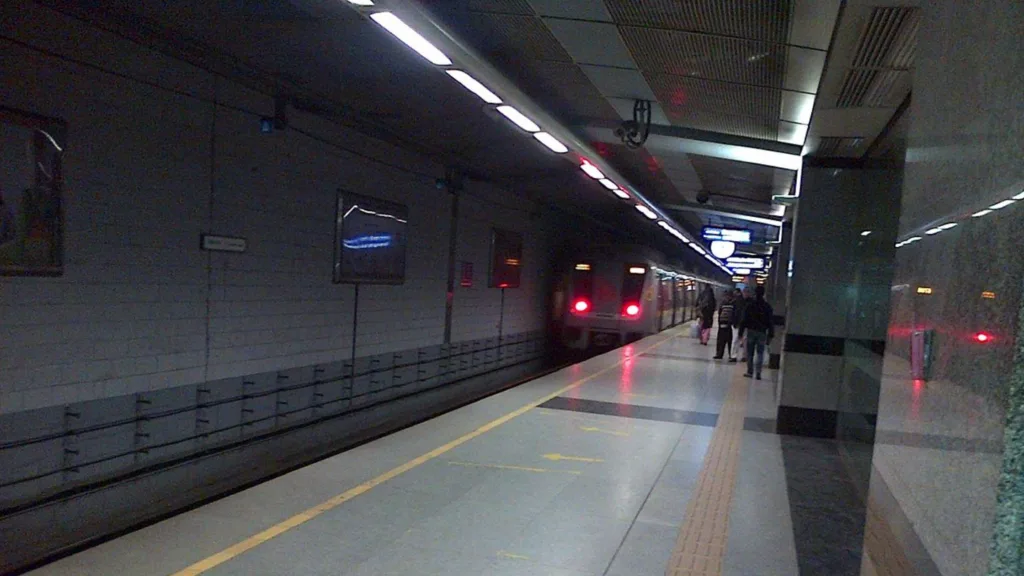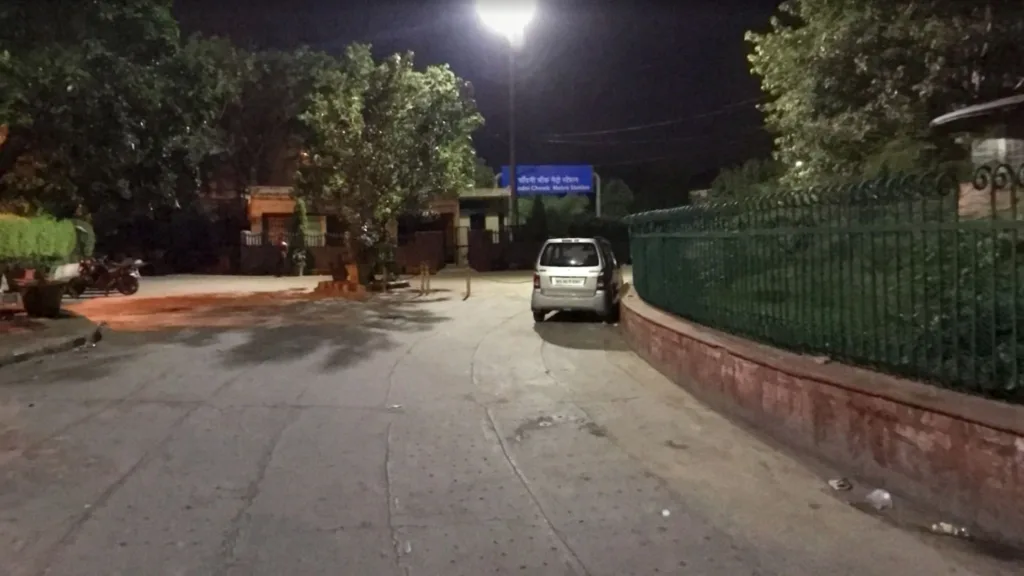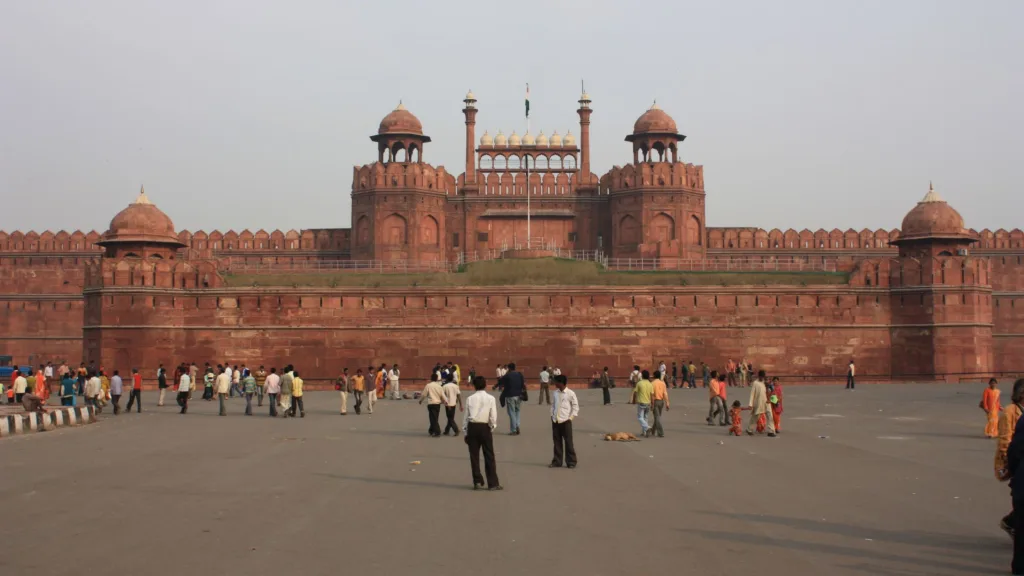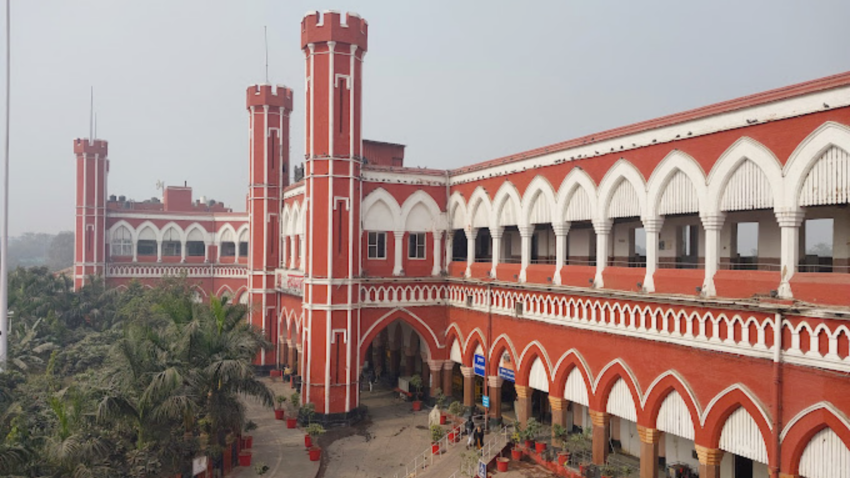Delhi is a city that seamlessly blends its rich historical past with the vibrant energy of the present. One of the gateways to the historical heart of Delhi is the Chandni Chowk Metro Station, also called Old Delhi Metro Station.
Stepping off the train at Chandni Chowk Metro Station is like stepping into another world. The air crackles with an electric energy, a blend of ancient whispers and modern vibrancy. Whether you call it Chandni Chowk or Old Delhi Metro Station, one thing’s for sure is that you’re in for a sensory feast. This place is a transportation hub that connects the city’s modern metro system with the age-old charm of Old Delhi. In this article, we will delve into the world of
History – A Journey Through Time
The history of Old Delhi is woven with tales of emperors, traders, and the mingling of diverse cultures. Chandni Chowk was originally laid out in the 17th century by Shah Jahan, the Mughal Emperor known for constructing the iconic Taj Mahal.
The area was designed to be a market square, bustling with trade and commerce. Centuries later, the Chandni Chowk Metro Station serves as a modern gateway to this historical market.
Its history resonates with the footsteps of traders from distant lands, the aroma of spices, and the echoes of the bygone eras. In fact, here, you will experience a journey through time.
As you descend into the station, the modern glass and steel give way to warm, earthy tones and intricate murals. These murals whisper tales of Old Delhi’s glorious past, from Mughal emperors to bustling marketplaces.
You’ll see scenes of the Red Fort in all its grandeur, Jama Masjid’s imposing minarets, and even lively street markets teeming with people. It’s like a historical snapshot come to life, preparing you for the adventure that awaits above.

Architectural Marvels
As you step out of the Chandni Chowk Metro Station, the architecture surrounding you is a fascinating blend of the old and the new. The station itself, with its modern amenities, seamlessly integrates into the historical backdrop of Old Delhi.
The intricate designs and motifs on the walls of the station pay homage to the Mughal architecture that defines the area.
Walking through the narrow lanes from the station, you’ll encounter magnificent structures like the Jama Masjid, the largest mosque in India, and the Red Fort, a UNESCO World Heritage Site. The visual spectacle of these architectural marvels is a testament to the grandeur of Delhi’s past.
Beyond the Platform
Emerging from the station, the cacophony of Old Delhi streets washes over you. Narrow lanes, packed to the brim with life, unfold before your eyes like a vibrant kaleidoscope.
Spice vendors weave magic with their aromatic wares, street performers captivate the crowds with their acts, and colorful textiles dance in the puff of air.
Chandni Chowk Metro Station isn’t just a transportation hub. It is a living museum, a feast for the senses, and a portal to a bygone era.

Preserving Heritage
The integration of modern infrastructure like the Chandni Chowk Metro Station has also raised concerns about preserving the heritage of Old Delhi.
However, efforts are being made to create a balance between conservation and development. The Archaeological Survey of India (ASI) plays a pivotal role in maintaining and restoring historical sites to ensure that future generations can experience the grandeur of the past.
The metro station, with its modern facilities, is a symbol of progress, demonstrating that the city can evolve while honoring its roots. The challenge lies in finding innovative ways to protect the heritage while meeting the demands of a growing population.
Challenges and Triumphs
While the charm of Old Delhi is undeniable, the area faces its set of challenges. The narrow lanes, crowded markets, and traffic congestion can be overwhelming for first-time visitors. However, the Chandni Chowk Metro Station has played a crucial role in easing accessibility and reducing the burden on the ancient infrastructure.
The metro not only connects Old Delhi with the rest of the city but also serves as a sustainable mode of transportation. It has become a lifeline for the local residents and a boon for tourists who want to explore the historical gems without the hassle of navigating through the chaotic traffic.
Treasures Within Reach
Chandni Chowk Metro Station serves as a gateway to a treasure trove of historical and cultural gems. Just a stone’s throw away stands the iconic Red Fort, a majestic symbol of Mughal power, its red sandstone walls whispering tales of emperors and battles. The imposing Jama Masjid, one of India’s largest mosques, beckons with its intricate architecture and serene courtyards.
Venture deeper into the streets of the Chandni Chowk market, where generations of merchants have plied their trades for centuries. Be prepared to haggle for colorful fabrics, handcrafted jewelry, and mouthwatering spices as these are all part of the vibrant market culture that’s become synonymous with Old Delhi.

Tips For Planning Your Visit
- Accessibility – Chandni Chowk Metro Station is easily accessible on the Yellow Line of the Delhi Metro. Trains arrive every few minutes, making it a convenient starting point for your exploration.
- Getting Around – Wear comfortable shoes, as you’ll likely be doing a lot of walking. Rickshaws and cycle rickshaws are readily available for navigating the narrow lanes.
- Bargaining – Haggling is an expected part of the market experience. Embrace the playful interaction and have fun while searching for treasures!
- Safety – As with any crowded area, keep an eye on your belongings and be mindful of your surroundings.
- Local Customs – Dress modestly, showing respect for the city’s cultural values.
Wrapping Up
Chandni Chowk Metro Station, or Old Delhi Metro Station, is more than just a transportation hub. It is a gateway to a world of experiences. You are going to enter a vibrant place filled with rich history, culture, and culinary delights.
So, on your next trip to Delhi, step off at this bustling station and lose yourself in the magic of Old Delhi. Allow the cacophony to guide you, the aromas to tempt you, and the sights to transport you back in time.
This journey won’t just be through the streets of Old Delhi. It will be a journey through the soul of a city. It is going to be a timeless experience that will stay with you long after you leave.

